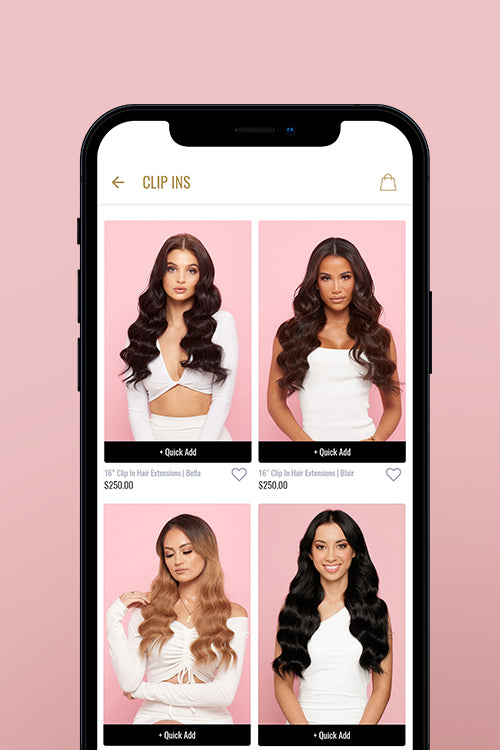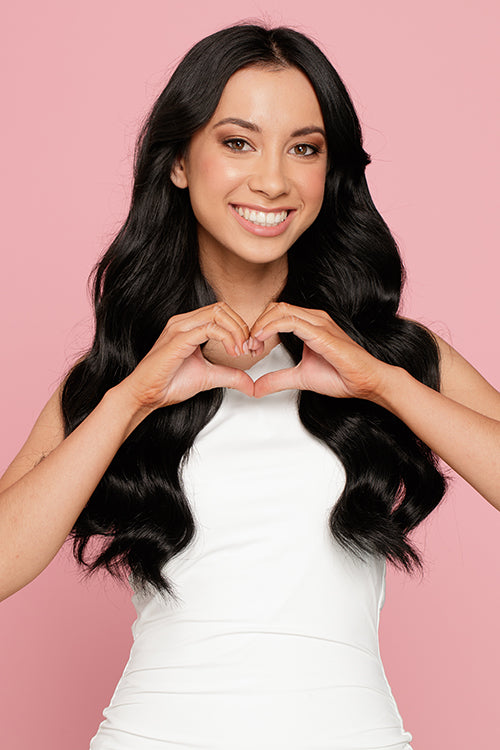How To Maintain Dry Ends & An Oily Scalp
First things first, everyone has a different hair type and with each hair type comes with its own battles to overcome. This blog post is dedicated to anyone that is dealing with dry ends and an oily scalp - aka combination hair type. Don't feel alone in this hair dilemma, find comfort in the fact that this is actually a very common hair type and many alike you deal with dry ends and an oily scalp on a daily basis as well.
Stress less because fortunately we have some tricks, tips and products that are going to help you deal with this issue first-hand where you will add hydration to your oily scalp and moisture to your dry ends.
Determining whether or not this blog is for you is finding out whether you have an oily scalp and dry ends first. If you look at the ends of your hair and see that they're visibly dry, brittle with split ends all over combined with your scalp feeling oily and can get greasy at the roots quickly (1 to 2 days after washing) that means you most likely have this combination hair type. People who also regularly colour or bleach their hair tend to develop over time an oily scalp with dry ends as colouring and bleaching your hair is known to strip your locks of the natural oils which keep it soft and well nourished.
One thing to note is that an oily scalp tends to be itchy and will make your hair look lifeless, slick and stringy on the ends (like the ends clump together). However dry ends will appear frizzy and damaged. Oily scalps and dry ends are super easy to diagnose and the quicker you are to determine this is your hair type, the easier it will be to revive your hair.
What causes oily roots and dry ends?
Dry ends can be caused from a vast variety of things like genetics, environmental factors or hair practices such as over-washing, too much exposure to the sun and the use of drying products. Not to mention the overuse of heated tools, colouring your hair too much or not attending those vital regular visits to your salon for a healthy trim.
However, oily roots are caused by the sebaceous glands in your scalp. These glands will produce excess sebum which will be carried down your hair shaft and is what can cause your hair to look greasy and oily around the scalp. Oily skin whether it's on your head or body can either be caused by genetics or by the products you use. The harsh reality is that many products like organic ones that contain essential oils can contribute to excess oil at your roots. If you leave your oily scalp untreated, your oily scalp can begin to cause dandruff or even seborrheic dermatitis. Seborrheic dermatitis is a common scalp condition that causes the scalp to appear to have scaly-like patches which can contribute to hair loss.
The below tips are for treating your oily scalp and dry ends and will make your haircare routine a lot easier ending up with you having healthier locks that not only look healthy but feel healthy too.
1. MAKE SURE YOU ARE USING THE RIGHT HAIRBRUSH
Brushing your hair won't make your hair more oily, despite the misconception to the myth. Brushing your hair will actually help distribute natural oils produce from your scalp throughout your hair and down to your dry ends. Team this natural magic with the right hairbrush and combating an oily scalp and dry ends will seem like a dream! However if you use the wrong hairbrush, things can become difficult such as making it harder to detangle your hair and not distribute the natural oils from your scalp throughout your hair adequately. For an example, boar bristle brushes are known to distribute natural oils throughout your hair evenly.
Also, you may not even realise you're doing this but you could be brushing your hair the wrong way which has negatively impacted you hair. When you're brushing your hair you should be brushing in continuous strokes from root to tip because this will evenly distribute the oils from your scalp and help stimulate blood flow. Continuously brushing from root to tip will also help remove any build up of products left in your hair like shampoo or gels as well as generally making your hair look healthier. Definitely avoid over brushing your hair which could be an example of every hour, that would be considered over brushing.
2. CORRECTLY SHAMPOO & CONDITIONER YOUR HAIR
If you're someone that shampoo's their whole entire head when in the shower, perhaps consider changing how you shampoo your hair and only shampoo your scalp because that's the only place that needs shampooing. Shampooing your roots will help get rid of any and all build up on your hair from dirt or products you've used around your scalp without removing any precious natural oils from scalp. However, when you're using conditioner only apply the product on the bottom ends of your hair. It's also never a bad idea to let it sit on your hair for a couple minutes when you're in the shower, before adding conditioner try and remove as much water from your hair. Think of your hair like a sponge, when it's wet and full of water it wont absorb product and this is why you want to have damp hair over saturating wet hair.
When you have oily hair, it's super common to feel the urge to wash your hair more often to get rid of the grease. However, the reality is that washing your hair too frequently can have the opposite affect of removing the grease - especially if you have an oily scalp with dry ends.
3. USE THE RIGHT PRODUCTS
There is a long list of ingredients that are questionable and are actually commonly found in hair products. Therefore when you are shopping for hair products that don't contain the below:
- Sulfates
- Mineral Oil
- Parabens
- Denatured Alcohols
- Synthetic Fragrances
- Formaldehyde
- Coal Tar
- Silicones
- Phthalates
- Para-Phenylenediamine
4. DRY SHAMPOO WILL BE YOUR BEST FRIEND
So now that you know over-washing your hair all whilst applying way too much shampoo can cause more harm than good for your oily scalp, dry shampoo will be your saving grace. Dry shampoo makes it quick and easy to absorb the excess oils hanging around your scalp without actually washing your hair. Dry shampoo is also good for giving your hair some volume and by you time to let the natural oils seep into your hair and make its magic.
5. USE HAIR OIL TO HYDRATE YOUR HAIR
Hair oil for oily hair... did you read that right? Yep! ONLY apply hair oil to your ends that are dry, brittle and full of split ends. Applying hair oil to the mid-lengths to ends of your hair can help restore those pesky dry ends without adding onto your oily scalp because you're only tending to the ends of your hair.
6. STOP TOUCHING YOUR HAIR!
*megaphone in hand* STOP TOUCHING YOUR HAIR! Although extremely tempting it is to run your fingers through your hair or twirl your hair locks without thinking about it, handling your hair with your oily fingertips from the day and touching all sorts of objects will not help you battle your oily scalp dilemmas - it's make things worse. Avoid touching your hair and absolutely avoid touching your face as well.
7. USE LESS HEAT ON YOUR HAIR
Oily scalp and dry ends is a hair type that shouldn't frequently use heat to style their hair, especially dry ends! Applying heat on your hair actually tends to make your hair more susceptible to oil as your natural oils will make its way down your hair and it's done much more easier if your hair is straight. Straight hair also sits closer to the scalp which makes it easy for the oils to travel. If you're someone that would rather curl your hair over straightening it, then you're in luck because having curly hair actually slows down the transfer of the natural oils produced by your scalp. Make sure you are using a heat protectant whenever styling with heated tools or try to not use heated tools all together for a week or so.
Combating your oily scalp and split ends doesn't have to be a tedious task and we hope the above tips and tricks makes things easier for you! Be sure to share your tips below.










Leave a comment